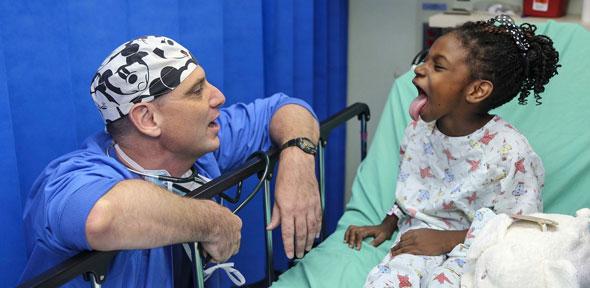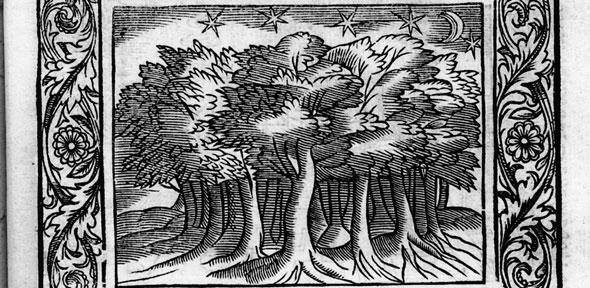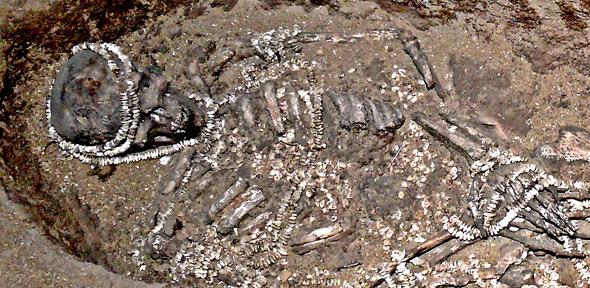INTRODUCTION
I begin this address by expressing my thanks to you all for being here as we honour, together, the history of our University and our colleges.
And what a magnificent history it is. For hundreds of years, Cambridge has nurtured generation after generation of leaders in areas ranging from philosophy and classics to economics and geography; from medicine and biology to mathematics and engineering; from theatre and comedy to politics and business – indeed in every field of human endeavour.
Cambridge graduates and researchers have contributed in disproportionate manner to human knowledge and to fundamental shifts in how we understand the world: from Newton to Conway to Hawking in physics; Hardy, Ramanujan and Cartwright in mathematics; Babbage, Turing and Wilkes in computing; Darwin, Watson-Crick-Franklin, Hodgkin and Sanger in biology; Trevelyan, Elton and Judt in history.
Cambridge alumni have also turned science and engineering discoveries into widespread economic benefit. Consider Whittle in engineering and Hauser in computing. For all of us, building on that legacy is an awe-inspiring gift and challenge.
Many of you will be aware of the saying about the difference between North America and Britain: “In Britain,” it goes, “people think that 100 miles is a long distance; in North America, people think that 100 years is a long time.”
Indeed, when I became President and Vice-Chancellor of the University of British Columbia in 2006, I was only the 12th person to take on the role.
So the task of becoming this University’s 346th Vice-Chancellor is one that fills me with wonder – and one that I undertake with humility.
In many ways, though, this day feels like a return to familiar ground: my time as a PhD student at Cambridge, under the inspired supervision of Sir Derek Bowett, was personally rewarding and career-defining.
It is unfortunate that, decades after Sir Derek first articulated some of his ideas on international dispute settlement and disarmament, we are now living in a world in which the use of weapons of mass destruction by nuclear powers has once again become a real threat.
My student days at Cambridge offered me the precious opportunity to challenge and deepen my understanding of international law.
But they also provided the space and the time to broaden my intellectual horizons, allowing me to read voraciously and widely, and to interact with one of the most stimulating and diverse groups of people I had ever met – staff and students from around the globe.
What I learned then has served me well ever since.
So I am thrilled in turn to serve an institution from which I gained so much.
And I am most grateful for the trust that you have placed in me, and the warm welcome you have given to my wife Paula and me. In mentioning Paula, I must add my thanks to her, for yet again uprooting her life and career and joining me on this adventure. Although, happily, there is no tradition of “first ladies” or “first spouses” in the university world, her support and concrete help has been instrumental in everything I have done, and I am sure that will be true here at Cambridge as well.
---
HOW THE WORLD SEES CAMBRIDGE
I hope I am not sidestepping protocol if I spend part of the time I have today sharing with you some of the reactions that my appointment as Vice-Chancellor has provoked among family, friends, well-wishers – and even a few sceptics.
Not because I want to dwell on what is, without question, a signal honour in my academic career.
No: it is simply that doing so gives me an excuse to reflect on how I think the world sees Cambridge now – which in turn will allow me, later on, to say a few words about how I would like the world to see Cambridge in the future.
Upon hearing that I had been offered the post, the most common response among people who know me was: “Wow!”
This, to be honest, was also my own reaction: Wow!
After all, this is a University that has shared over eight centuries of scholarship and learning. Wow…
A University whose world-leading research is linked to almost four times as many Nobel laureates as the country of my birth. Wow…
A University that has responded to the challenges faced by previous generations through the discovery and creation of new and world-changing ideas and technologies –from IVF to embryonic stem cells, from the world’s first computer game to a standardised method to measure national accounts.
A University expanding at an unprecedented rate, in its biomedical campus to the South and in its newest development in Northwest Cambridge, and investing more in local infrastructure than at any moment in its history.
A University admitting a higher proportion of state-educated students, and those from the hardest to reach communities, than it has in decades.
A University on the cusp of raising £1 billion in its most ambitious fundraising campaign ever.
Again: Wow.
This audience does not need me to tell it what makes the University of Cambridge the thriving institution it is today.
And yet, it is good to be reminded every now and then of the elements that make this place unique.
Surely one of them is the deep-rooted sense of community that binds the collegiate university together. We are bound by our shared purposes and our willingness to share resources and talents.
Another Cambridge trait is the uncompromising commitment to excellence in education, learning and research, enshrined in the University’s mission statement, and lived out in practice each and every day in our lecture theatres and supervision rooms, in our libraries and labs, in our rehearsal halls and sports fields.
Yet another Cambridge asset – and this one is essential—is strong leadership over the generations.
I must pay tribute to my predecessors – In particular to the late Professor Sir David Williams who pioneered the role of full-time Vice-Chancellor, and Professors Lord Broers, Dame Alison Richard and Sir Leszek Borysiweicz, whose ambitions and wise stewardship over the past two decades have helped transform a world-famous university into a truly world-leading university.
Alec, Alison, Borys — all of us here are deeply indebted to you for your many contributions to the University, and I hope to build on your outstanding legacy in the years ahead.
---
COPING WITH COMPLEXITY
The second reaction to news of my appointment was decidedly more... nuanced.
Following the often-repeated exclamation “Wow!” came a follow-up question: “Why now?”
Asked, generally, by those who wish me well, the question is an acknowledgement of the fact that, on both sides of the Atlantic, my appointment coincided with the beginning of a period of profound unease.
I have described it before as a new age of anxiety, marked by a widespread distrust in institutions, in experts, and in business-as-usual politics. Nobel laureate Toni Morrison offered a sobering assessment over a decade ago, but her words resonate powerfully today:
I don’t think we can any longer rely on separation of powers, free speech, religious tolerance or unchallengeable civil liberties as a matter of course. That is, not while finite humans in the flux of time make decisions of infinite damage. Not while finite humans make infinite claims of virtue and unassailable power that are beyond their competence, if not their reach.
Our era’s anxiety is fuelled by the erosion of ties that once bound people and peoples together, by the loss of a wider sense of community.
Another novelist closer to home – our very own alumna Zadie Smith — argues that even in our individuality “we are always communal. There is always a point where a hand reaches out to another.” But what if that sentiment is lost? What if there is no more faith that a hand will ever reach out?
As individuals and societies become increasingly inward looking, they also become increasingly susceptible to extremism in all its forms.
Historian Eric Hobsbawm got it right when, in The Age of Extremes, he remarked: "The world of the third millennium will… almost certainly continue to be one of violent politics and violent political changes. The only thing uncertain about them is where they will lead."
Hobsbawm also warned that inequality would be one of the main issues to contend with: "Social distribution and not growth”, he said, “would dominate the politics of the new millennium."
In this, too, that distinguished Cambridge alumnus was prescient. His words challenge us to ask how a collegiate university that is bound by voluntary ties of shared purpose can help to point the way towards similar shared purpose in the wider world.
So, as Zadie Smith suggests, we must reach our hands outward; and as we do so, we must also welcome in an ever more diverse group of students and scholars who have the desire and ability to inspire and produce new insights that shift our understanding of the world around us. That is a Cambridge tradition we must uphold.
More or less since the dawn of humanity, every generation has believed that it faces unprecedented difficulties, enduring perils that its forebears could not have imagined.
I would never assert that the current generation faces challenges greater than at any time before – that would be ahistorical in the extreme – but I am convinced that the challenges today are more complex – and certainly affect all of us more immediately.
Take, for instance, the urgent dilemmas posed by new information technologies:
Yes, information technology has helped us to be more widely connected; but it has also, paradoxically, reinforced what Cambridge anthropologist Ernest Crawley once called (in a phrase later made famous by Sigmund Freud) “the narcissism of minor differences”.
Yes, technology has helped to make our societies more affluent, and better informed; but has also encroached on our personal lives in ways that few could have anticipated, has eroded public trust, and left us more exposed to many forms of extremist, hateful views.
How do we begin to understand and address these issues?
Or consider the problems of global food security. Tackling them requires the combined efforts of engineers, geographers and mathematicians collaboratively developing tools to predict future demands for energy, land and water.
It requires plant scientists and veterinary scientists collaborating with colleagues across the world to improve crop yields and livestock resilience to disease.
It requires researchers in the humanities and social sciences analysing the political economy of food supply, and evaluating the role of political structures in the production and distribution of food.
It requires greater understanding of the regulatory frameworks of land ownership, or the economics of changes in land-use.
For the University of Cambridge, which sees it as part of its mission to actively confront issues like these, one of the greatest difficulties is that we must constantly be prepared to deal with newly emerging questions that we did not know had to be answered.
***
There is unprecedented complexity, too, in the landscape of higher education in which we operate –both in the United Kingdom and around the world.
In his latest book, Speaking of Universities, Professor Stefan Collini of our Faculty of English offers a sobering assessment of the vertiginous pace of change universities have endured over the past few decades.
Reading him I learned that when I was finishing my PhD in Cambridge (that is, in the second half of the 1980s), there were forty-six universities in the UK educating approximately 350,000 students. Today, there are more than 140 universities educating over two million students.
And this is before even considering global university expansion – in the past two decades, Collini reminds us, somewhere in the region of 1200 universities or higher education colleges have been established in China.
Over the past five years alone UK universities have seen an unparalleled shakeup in the way they are funded, governed and evaluated.
“The pace and scale of change,” Collini says, “have produced a sense of disorientation, an uneasy feeling that, as a society, we may be losing our once-familiar understanding of the nature and role of universities.”
I agree with Professor Collini’s diagnosis about this uneasiness, though I remain more upbeat about the direction in which universities are moving.
One reason for optimism is that universities, including this great university, are used to being battered by external forces of change.
Cambridge has survived, and then thrived, through the Reformation, civil war, world wars, depressions and recessions, economic bubbles, and more.
Our current worries are not unique. I remain resolutely confident in universities’ ability to endure and contribute despite – perhaps even because of—the fast pace of change.
Universities – and in particular universities with a global reach, like Cambridge—are uniquely positioned not only to cope with, but indeed to embrace complexity.
Addressing most of the big issues facing humanity requires that we work across the borders of nations and across the boundaries of academic disciplines.
No single country or discipline can have exclusive purchase on how we attack today’s fundamental problems – nor can a single institution, no matter how high in the league tables.
With its breadth and depth of expertise, with its history of truly disruptive discovery, Cambridge must take a global lead as the place where barriers between areas of knowledge are broken down, the place where global collaborations are seeded and nurtured.
In a fragmented world, what Cambridge can do better than most other institutions of any type is find answers to what another alumnus, Salman Rushdie, once called “the great question of how the world joins up”.
---
HOW WE WANT THE WORLD TO SEE CAMBRIDGE
Allow me, if I may, to return to the reactions elicited by my appointment as Vice-Chancellor.
Having gone through the excitement of that initial “Wow!”, and then withstood the barrage of “Why now?”, I was then confronted with the next obvious query: “How?”
As in – “How are you going to do this difficult job?”
Since my appointment, almost a year ago, this has become the burning question: How?
How can I work with you to build on this University’s outstanding record of service and contribution locally and to the world?
How do we cultivate a shared sense of purpose – across the collegiate University and beyond — while recognising that, in the words of Canadian philosopher Charles Taylor, “each of our voices has something unique to say”?
How do we all ensure the university is prepared to engage with, invest in, and learn from complexity?
How do we collectively balance the need to take risks in pursuit of our objectives with the requirement to ensure appropriate and sustainable stewardship of our institution?
How do we balance the requirement to measure and evaluate concrete outputs and effects with the less easily quantifiable aims of making significant societal and cultural contributions?
How do we offer students the best experience that a university can offer, and instil in them the sense that the greatest advantage of a Cambridge education is not its impact on what they will earn – but on what they will learn?
How do we make sure that our world-leading research addresses not only the questions we are faced with today, but is positioned to explore questions that have yet to arise?
How do we best deploy new technologies to enhance the experience of teaching, learning and communicating?
How do we pursue full engagement with the world at a time when disengagement and fragmentation seem to be ascendant?
How do we guarantee that we are a fully inclusive university, as open as possible to talented people, no matter their geographic origins or their background?
How do we facilitate robust but respectful debate – even of issues that we find deeply uncomfortable—preserving what John Milton called “the liberty to know, to utter, and to argue freely according to conscience, above all liberties.”
These are some of the big questions that we will need to focus upon in the years ahead. I adopt, as inspiration for my trusteeship as Vice-Chancellor, physicist Niels Bohr’s memorable phrase: “Every sentence I utter must be understood not as an affirmation, but as a question.”
The answers we find to these questions will determine how the rest of the world sees us. Going beyond the “wow” to a view of Cambridge as a basic building block not only in UK society, but in global society as well.
CONCLUDING REMARKS
Ladies and gentlemen,
I finish by returning to our colleague Stefan Collini, who has memorably described a university as a “collective but intangible enterprise sustained across time, both past and future, which is not the property of any one individual or group or institution or even generation.”
It is a definition I fully embrace.
We are working not only for the benefit of students and scholars who are here today; in effect we are all trustees, nurturing the University on behalf of new generations that will be producing ideas and tackling problems that we cannot even begin to imagine.
My father was a Minister in the Anglican Church; my mother was, for a time, a Parish secretary.
One of the many things I inherited from them was a deeply ingrained sense of service to a wider community.
I also inherited a clear set of principles – an obligation to offer one's best, a refusal to accept the easy or the expedient path, a duty to truth, even if it is but seen through a glass darkly.
I have found these principles a source of great strength.
They underpin the work of our best academic institutions.
They demand that we are steadfast in speaking out, in refusing to accept curbs on academic freedom, and in resisting attempts to undermine knowledge, expertise and research.
Our own Pro-Vice-Chancellor, Professor Graham Virgo, has talked of the fundamental role of universities as "a critic and conscience of society"– that seems to me exactly right.
I am mindful of the fact that a single individual cannot possibly determine the success of an institution – especially not one as multifaceted and deeply grounded as Cambridge.
In setting directions for the University, I must rely heavily on the collective wisdom of the people who make Cambridge such an astonishing place to learn, work, teach and research.
Let us ensure, together, that our extraordinary history does not define our future potential: we are not an excellent university because we are an ancient university; we have become an ancient university because of our continued excellence.
So we must strive always to do more for learning itself and for the world we serve, and to do this in new ways that respond energetically to the social, political and economic conditions we face in our generation.
And therein lies the means to achieving what should be our ultimate ambition: to ensure that, in an increasingly complex and anxious world, the University of Cambridge remains an unstoppable, unapologetic force for knowledge and understanding, for more inclusive community, and for the betterment of our shared world.





































